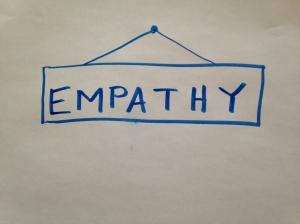We hear all the time about learning for the 21st century and the need for U.S. schools to prepare our students to effectively compete internationally. Science, technology, engineering, and math (STEM) predominate the conversation and yet there is often one critical area of development that is missing from the vision: teaching children how to build creative, intuitive, trusting and collaborative relationships with others.
Many people became aware of how emotional intelligence plays a role in a person’s success, both socially and professionally, with the publication of Dr. Daniel Goleman’s landmark book, “Emotional Intelligence: Why It Can Matter More Than IQ,” in 1995. Since then, organizations like CASEL (co-founded by Dr. Goleman and Timothy Shriver) and the Developmental Studies Center (founded by Dr. Eric Shaps) have conducted research on social and emotional learning programs and the positive effects these programs have on student achievement. The Novo Foundation, the 1440 Foundation, and the Einhorn Family Charitable Trust have invested in evidence-based social and emotional learning programs that promote, among other things, pro-social skills development, empathy-consciousness within schools, equity-based opportunities for disenfranchised youth, and self-regulation and mindfulness practices.

Water workers in Sea Bright, New Jersey, survey a residence damaged by Superstorm Sandy. (Image credit: Getty Images via @daylife)
The efforts of these organizations and many other like-minded groups are part of a national movement that would make social and emotional learning a free-standing, required learning standard for grades pre-k through 12. While the movement is changing the way many educators, parents and policymakers think about schools, it’s not moving fast enough. Maybe I’m impatient.
In November, 2012, three weeks after Superstorm Sandy ravaged the Northeast seaboard, I visited my childhood home near Sea Bright, New Jersey, where my parents still live. As I drove north on Ocean Avenue I was deeply touched by what I saw; I saw people working together, cleaning up, and beginning the process of rebuilding the community they love. It is in such times of extreme need when each person’s natural inclination toward empathy and compassion surfaces.
I wonder what would the world be like if we acted with this level of decency, tenderness and caring every day in all of our interactions?
We can teach this way of being in our schools by living this way. I believe that if all schools (instead of a select few) put as much emphasis and exploration in teaching social and emotional competencies as they do on math, science and literacy, in 10 years, the workforce would be more productive, talented and happier, helping our nation and the rest of the world at the same time. In the words of emotional intelligence author and practitioner Robert K. Cooper: “These skills are ‘common sense but not common practice.’ ”
The current reality is that most schools are evaluated and funded based on reaching state standards and test scores. Human relationship skill building is often seen as an “add-on,” or something that can’t be taught, but these skills can be refined through conversation, modeling and recognition. Social and emotional learning is implemented best when it is a part of a consciousness movement—one that creates a balanced, challenging, and ultimately life-changing learning community.
In my work as a systems change specialist in schools and other learning communities, here are the practices I encourage instructional leaders to promote:
- Teach listening as a core skill and expect it as a cultural practice. Start by being an active listener yourself and give people the time they need to reflect. Time not made for someone is time wasted.
- Make dialogue a primary team, group or classroom practice. Dialogue opens the doors to exploration—what Peter Senge in his guide “The Fifth Discipline Fieldbook” calls “skillful discussion,” where thoughtful decisions can be made that honor all participants (or, in business, stakeholders).
- Identify roles, not organizational charts. When people are able to articulate their role, what they need to be successful and what gets in the way of their success, an empathic understanding is present and the beginnings of a healthy team, class or group takes shape.
- Lead with consistency, authenticity and honesty. Be clear as to why you are doing what you are doing. Do not lead or manage through personality but rather through articulation. To articulate is to clarify.
Let’s make it common practice to return to the ancient way when people survived and excelled because they knew that survival was based on working together, overcoming conflicts, and helping their neighbors through difficult times.
We need to create an authentic curriculum—a curriculum of human touch. Our children deserve it, and the world definitely needs it.
This post originally appeared in Forbes.com. April, 2013.
